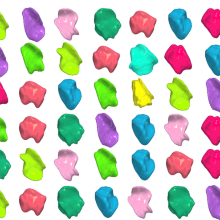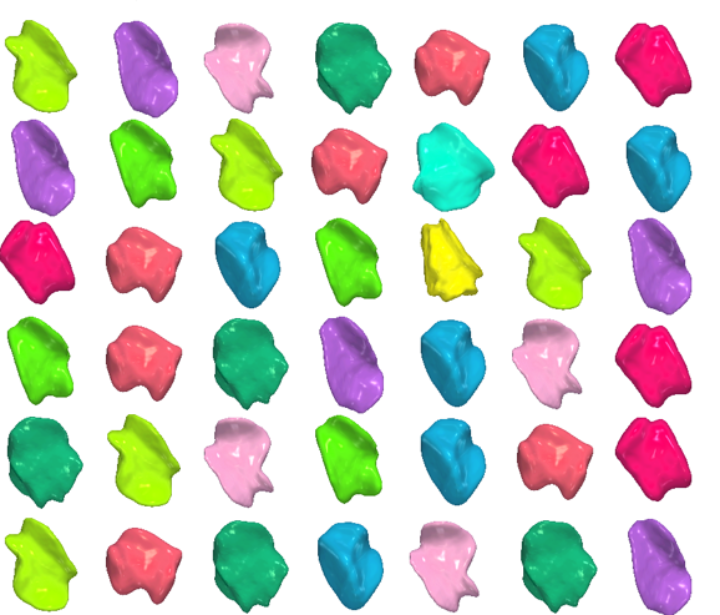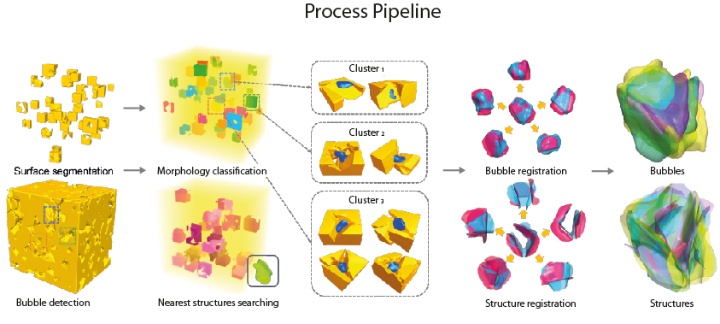The SFB 1313 publication entitled "Visualization of Bubble Formation in Porous Media" by Hui Zhang, Steffen Frey, Holger Steeb, David Uribe, Thomas Ertl and Wenping Wang is a collaboration between project area B05 of Holger Steeb and Wolfgang Nowak (Institute of Applied Mechanics) and project area D01 of Thomas Ertl and Steffen Frey (Visualization Research Center), in cooperation with the University of Hong Kong (Hui Zhang and Wenping Wang).
The subject of the publication is a visualization approach for the analysis of CO2 bubble-induced attenuation in porous rock formations. The first step and basis of the research is a high resolution X-Ray Computed Tomography enhanced experiment which investigates the deposition of CO2 bubbles in the pore space of the fluid saturated reservoir sandstone. Where do CO2 bubbles grow and settle – in the pores themselves or on the pore surfaces? How does the pore space influence the geometry of the bubbles? How does the bubble geometry influence the effective acoustic properties in the sandstone pore space?
During the experiment, the researchers degraded CO2 in water at a constant pressure of 40 bar and an ambient temperature between 25-30°C. They injected the liquid into an already saturated sandstone until it was completely saturated with the H2O-CO2 liquid. Pressure reduction caused gas bubbles to precipitate, which can be observed by time-resolved X-Ray Computed Tomography (XRCT) images.
For this, different visualization approaches were developed to yield a better understanding concerning the processes taking place during the experiment, e.g., how the bubbles attach to the structure of the porous medium and how they influence each other. The introduced efficient techniques are components of an analysis pipeline consisting of four major steps.
1. Segmentation: Extracting CO2 bubbles and their surrounding porous structure from XRCT data.
2. Similarity Clustering & Classification: Identifying and classifying similar bubble structures and porous structures in terms of the morphology and geometric features.
3. Registration: Allows a direct visual comparison. Customized registration techniques help to consider the bubble shape as well as the contact points with the porous media surface.
4. Simulation: Extraction of further values to support the creation of a physical model and to produce simulations that are more precise.
The publication introduced efficient techniques to quantitatively extract geometric bubble features, which, for instance, offer important knowledge concerning the identification of critical seismic characteristics of fluid-saturated rocks and CO2 storage.
Link to publication
Img 1: Img 2:
Classification of bubble structures Analysis pipeline – four major steps




